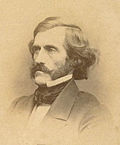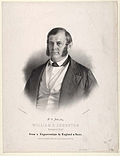| 1856 presidential election | |
  Nominees Frémont and Dayton | |
| Convention | |
|---|---|
| Date(s) | June 17–19, 1856 |
| City | Philadelphia, Pennsylvania, U.S. |
| Venue | Musical Fund Hall at 808 Locust Street, Philadelphia, Pennsylvania, U.S. |
| Candidates | |
| Presidential nominee | John C. Frémont of California |
| Vice-presidential nominee | William L. Dayton of New Jersey |


The 1856 Republican National Convention was a presidential nominating convention that met from June 17 to June 19, 1856, at Musical Fund Hall at 808 Locust Street in Philadelphia, Pennsylvania. [1] It was the first national nominating convention of the Republican Party, founded two years earlier in 1854. It was held to nominate the party's candidates for president and vice president in the 1856 election. The convention selected John C. Frémont, a former United States Senator from California, for president, and former Senator William L. Dayton of New Jersey for vice president. The convention also appointed members of the newly established Republican National Committee.
Contents
- History
- Background
- North American Party convention
- The first Republican convention
- Presidential nomination
- Presidential candidates
- Vice-presidential nomination
- Vice-presidential candidates
- See also
- Footnotes
- Further reading
- External links
The Republican Party had been organized by opponents of the expansion of slavery in the territories following the passage of the 1854 Kansas–Nebraska Act. With William Seward, Salmon P. Chase, and Charles Sumner all taking their names out of consideration, Frémont entered the Republican convention as the front-runner for the presidential nomination. Frémont had previously been nominated by the North American Party, which consisted of anti-slavery members of the American Party who were unwilling to support the American Party candidate, Millard Fillmore. Though Associate Justice John McLean of Ohio had the backing of some delegates, Frémont clinched the presidential nomination on the first formal ballot of the Republican convention.
Dayton was nominated on the first formal vice-presidential ballot, defeating former Congressman Abraham Lincoln of Illinois and several other candidates. The Republican ticket carried several Northern states in the general election, but the Democratic ticket of James Buchanan and John C. Breckinridge won the 1856 election.



















